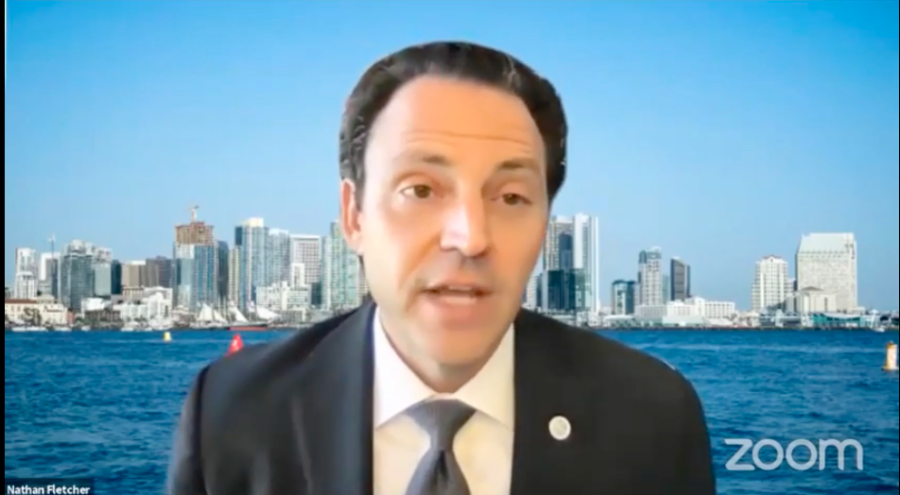The Obama administration’s failure to reach the goal of 1 million electric cars on the road by 2015 is a direct result of its prioritization of cheap oil.
Going home over the winter break, many people might have noticed that their wallet was fuller than usual. It was unlikely that less holiday spending caused this phenomenon but rather low gas prices. Starting in Sept. 2014, gas prices in the U.S. have been falling at a steady rate to reach prices as low as $2.20 in California, according to the AAA Fuel Gauge Report. California gas prices have not been this low since 2009. On the surface, low gas prices might seem like a plus, but in reality the U.S. paid a greater cost. To get such low prices, President Obama sold out his goals and promises for a greener future for America to instead invest in the U.S.’s Achilles’ heel: oil.
To begin, let us discuss why gas prices are so low right now. Before 2008, the Organization of Petroleum Exporting Countries, which controls approximately 40 percent of the global petroleum supply, used the high demand caused by a developing China and low supply of oil to their advantage to drive global oil and gas prices up. While Europe used the opportunity to further wean itself off oil and onto renewable energy, Obama chose to invest in the risky method of oil mining. In 2008, the Obama administration decided to seriously pursue access to crude oil, located in shale formations in tar sands across the country. Six years later, it “paid off” as U.S. oil production increased (and continues to increase). The new supply of oil from the U.S. is now competing with OPEC’s supply, thus creating a price war. Starting last September, OPEC, led by Saudi Arabia, has been allowing global oil prices to drop and will likely continue to do so until oil no longer becomes profitable to the U.S.
This is why there’s been such a decline in gas prices recently, and it is a supposed win for Americans. The money Americans are saving is seen as a small economic boost. The problem is that low gas prices won’t last. While Saudi Arabia can take the decrease in profits, the other petroleum producing countries such as Russia, Iran and Venezuela cannot, as their governments rely heavily on oil sales profits to balance their budgets. Saudi Arabia and the U.S. are really the only oil producing countries that can seriously survive extremely low profits from oil sales. How long it will take until the other countries intervene to end this war is a question up for grabs, but it is clear that for the majority of these countries, sustaining low oil prices is not a possibility.
The real problem for America is that Obama made a deal with the devil for those low prices and sabotaged his goals for a greener future in the process. Investing in new oil production is creating jobs that will last for years in a sector that America cannot depend on for its future. Todd Stern, Climate Change Envoy for the U.S. Department of State, was even quoted by the U.K. Guardian as saying that the Obama administration sees no long-range future for fossil fuels. Yet, America will have invested more than $31 billion dollars by 2015 in refining tar sands. This is more money than Obama’s stimulus bill for investing in energy and the environment provided, with only $30.2 billion allocated over 15 years. If the administration had been smart, they could have divested from oil like Europe and allocated those funds toward green energy, effectively doubling the funding that the stimulus provided.
In addition, while Obama was investing in tar sand refineries in 2008, he was also promising to put 1 million electric vehicles on the road by 2015. It is now 2015, and the Obama administration did not reach its goal. In 2014, when the U.S. had record high gas prices, only about 500,000 electric vehicles were on the road. In total, electric vehicles sales made up less than 4 percent of auto sales in the U.S. Electric auto sales don’t look great for 2015 either. Historically speaking, low gas prices have led to higher sales of gas-dependent cars. And while it’s too early to determine what the effects of the recent low gas prices are doing for electric car sales, the predictions don’t look too bright.
The list of all the green energy promises Obama made and sometimes invested in could go on and on, and most of them were largely undermined by America’s oil dependence. It might seem like Obama compromised by investing in both oil and renewable energy, but in 20 or 30 years down the line, the negative effects of his decision making will be more apparent. Investing in shale was investing in a future that cannot be depended on. Short term, this decision made sense, but in the long term, it was an egregious mistake. In the end, Obama was just like any other American: When it came to oil, he sold out.










